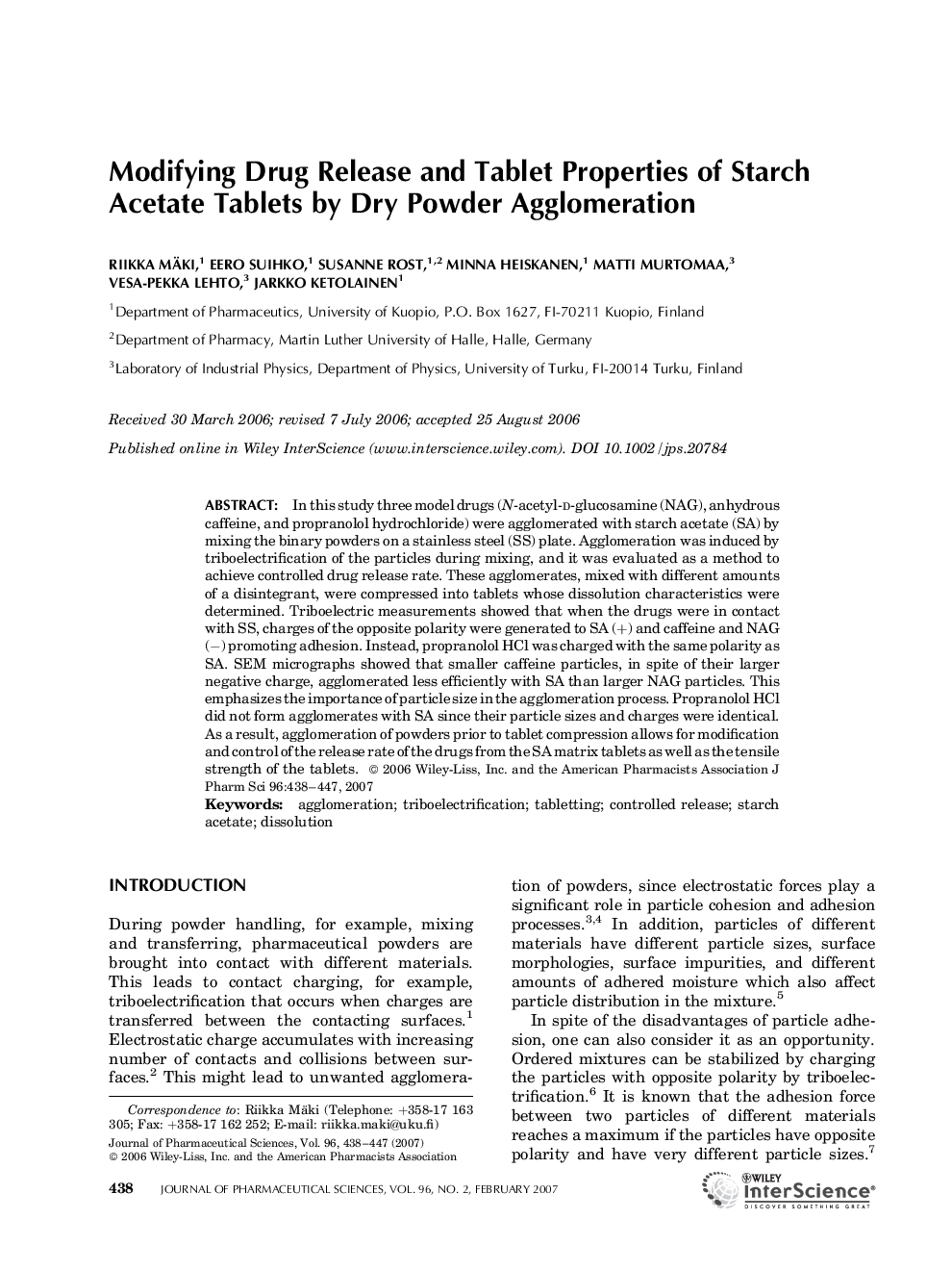| Article ID | Journal | Published Year | Pages | File Type |
|---|---|---|---|---|
| 2487048 | Journal of Pharmaceutical Sciences | 2007 | 10 Pages |
Abstract
In this study three model drugs (N-acetyl-D-glucosamine (NAG), anhydrous caffeine, and propranolol hydrochloride) were agglomerated with starch acetate (SA) by mixing the binary powders on a stainless steel (SS) plate. Agglomeration was induced by triboelectrification of the particles during mixing, and it was evaluated as a method to achieve controlled drug release rate. These agglomerates, mixed with different amounts of a disintegrant, were compressed into tablets whose dissolution characteristics were determined. Triboelectric measurements showed that when the drugs were in contact with SS, charges of the opposite polarity were generated to SA (+) and caffeine and NAG (â) promoting adhesion. Instead, propranolol HCl was charged with the same polarity as SA. SEM micrographs showed that smaller caffeine particles, in spite of their larger negative charge, agglomerated less efficiently with SA than larger NAG particles. This emphasizes the importance of particle size in the agglomeration process. Propranolol HCl did not form agglomerates with SA since their particle sizes and charges were identical. As a result, agglomeration of powders prior to tablet compression allows for modification and control of the release rate of the drugs from the SA matrix tablets as well as the tensile strength of the tablets. ©2006 Wiley-Liss, Inc. and the American Pharmacists Association J Pharm Sci 96:438-447, 2007
Related Topics
Health Sciences
Pharmacology, Toxicology and Pharmaceutical Science
Drug Discovery
Authors
Riikka Mäki, Eero Suihko, Susanne Rost, Minna Heiskanen, Matti Murtomaa, Vesa-Pekka Lehto, Jarkko Ketolainen,
